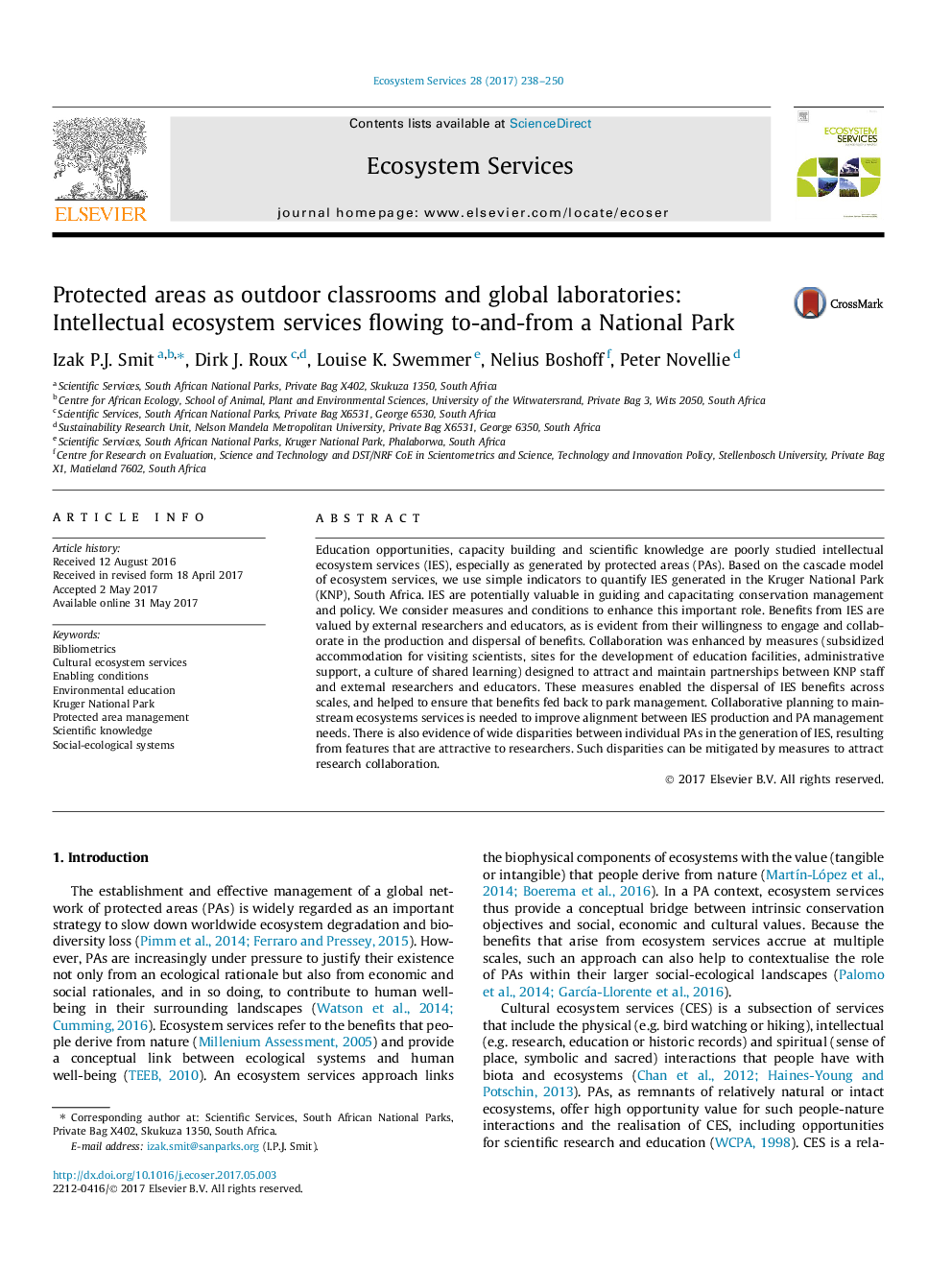| Article ID | Journal | Published Year | Pages | File Type |
|---|---|---|---|---|
| 6556512 | Ecosystem Services | 2017 | 13 Pages |
Abstract
Education opportunities, capacity building and scientific knowledge are poorly studied intellectual ecosystem services (IES), especially as generated by protected areas (PAs). Based on the cascade model of ecosystem services, we use simple indicators to quantify IES generated in the Kruger National Park (KNP), South Africa. IES are potentially valuable in guiding and capacitating conservation management and policy. We consider measures and conditions to enhance this important role. Benefits from IES are valued by external researchers and educators, as is evident from their willingness to engage and collaborate in the production and dispersal of benefits. Collaboration was enhanced by measures (subsidized accommodation for visiting scientists, sites for the development of education facilities, administrative support, a culture of shared learning) designed to attract and maintain partnerships between KNP staff and external researchers and educators. These measures enabled the dispersal of IES benefits across scales, and helped to ensure that benefits fed back to park management. Collaborative planning to mainstream ecosystems services is needed to improve alignment between IES production and PA management needs. There is also evidence of wide disparities between individual PAs in the generation of IES, resulting from features that are attractive to researchers. Such disparities can be mitigated by measures to attract research collaboration.
Keywords
Related Topics
Life Sciences
Agricultural and Biological Sciences
Agricultural and Biological Sciences (General)
Authors
Izak P.J. Smit, Dirk J. Roux, Louise K. Swemmer, Nelius Boshoff, Peter Novellie,
